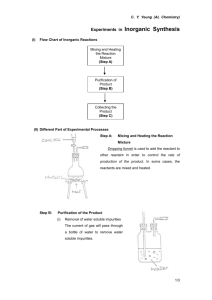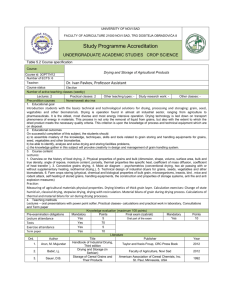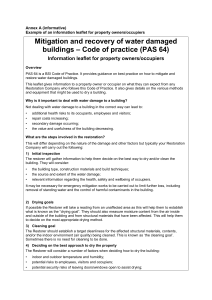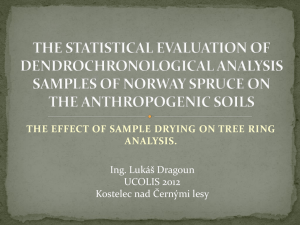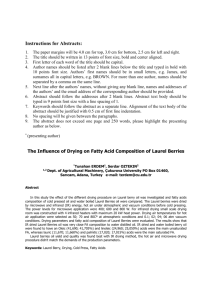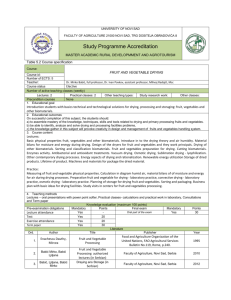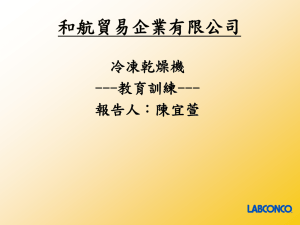`Drying Equipment`
advertisement
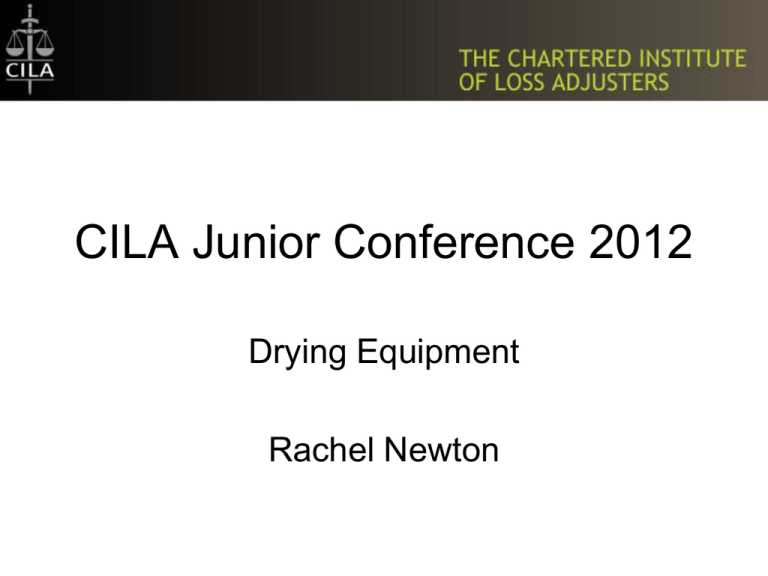
CILA Junior Conference 2012 Drying Equipment Rachel Newton Welcome Different types of Drying Equipment and their use. Mitigation, Damage limitation & Triage Mitigation - means ‘making (something bad) less severe’ Damage Limitation - means ‘to take action to limit the damaging effects of an accident or error’ Triage - means ‘the process of determining the most important people or things from amongst a large number that require attention’ What need to consider to be of real benefit ? Safety Importance of time Viability for restoration Client’s priorities Time !! How soon do we receive the instruction after the incident. Earliest opportunity even if policy cover has not been fully accepted How soon after do we assess the damage (normally 24 - 48 hours) Consider nature & extent of loss Business profile & potential interruption High net worth Resources available - expertise in the specific field, surge situations Delegated authority This will allow instant response and potentially huge cost savings On-site works Prioritise site work, ensuring key areas or equipment are restored / protected / moved / relocated to avoid further damage The importance of time… A swift, correct response can have a dramatic positive effect on minimising the loss 0hrs Start of the Incident +70hrs (Mould forms on organic based materials) +24hrs (Standing water has penetrated 12mm into concrete) + 3hrs (Machinery starts to degrade + 6hrs (Electronics because of chloride in PC’s & other equipment starts based acids – to deteriorate) burning plastics) +36hrs Odour problems start resulting from bacteria formation +72 hrs Measuring and Monitoring Hand Held digital Hygrometer Moisture Measuring Device Thermal Imagining Moisture Mapping The Travel of the water Horizontal or Vertical Origin Asbestos – Where can it be found Piping Textured coatings Ceiling tiles Fire proofing Lagging Fire blanket Floor tiles Brake pads Roofing sheets Asbestos – What can Quickly respond Assess Sample Protect Rapid results Remove Provide certification Disposal do for you? Which Method to use then? What are we trying to achieve? What are the constraints? What is the access like? How “wet” is the building? “Sledge Hammer to crack the Nut” Types of Drying Equipment Building Dryers Dehumidifiers Dessicant Dehumidifiers Refrigerant Dehumidifiers Speed Dryers Air movers Heated Air movers Fans Traditional Drying “Conventional Drying system” Usually consists of a combination of Refrigerant Dehumidifiers and Air movers. The purpose of the Dehumidifier is to remove moisture from the affected area. The Air movers assist in this process by moving air around and preventing micro climates Equipment readily available, widespread use, suitable for many different applications, easy to use. Not effective at low temperatures Typical Dessicant and airmovement system Works in all environments Needs external outlet (High level Window or Grill) Performs better than refrigerant dehumidifier at low temperatures Target or Enclosed drying Use plastic sheeting or other material to reduce volume around wet area Reduced volume, reduced amounts of equipment, reduced drying time. “Target” Drying Target Drying of a Concrete slab floor Reduce volume by creating “Tent” RDS Systems – Operational Principle Rapid Drying System Significantly reduced drying times Reduced stripping out work Low Electrical consumption Potential for massive savings on BI, AA, Loss of Rent and other policy elements Other Applications (emergency heat etc) Necessitates property vacation Expertise in setup & monitoring Cost - not for every job (work with restoration company project manager to determine viability) Low Heat Dessicant type drying system 10000m3/h dry air. Mounted on a trailer, ideal for combating the initial chaos after massive water damages. Good for use in “furnished” buildings Remote Monitoring Captures and records data Can be accessed “remotely” Saves time and cost Transparency in the drying process Questions? CILA Junior Conference 2012 Drying Equipment Rachel Newton


